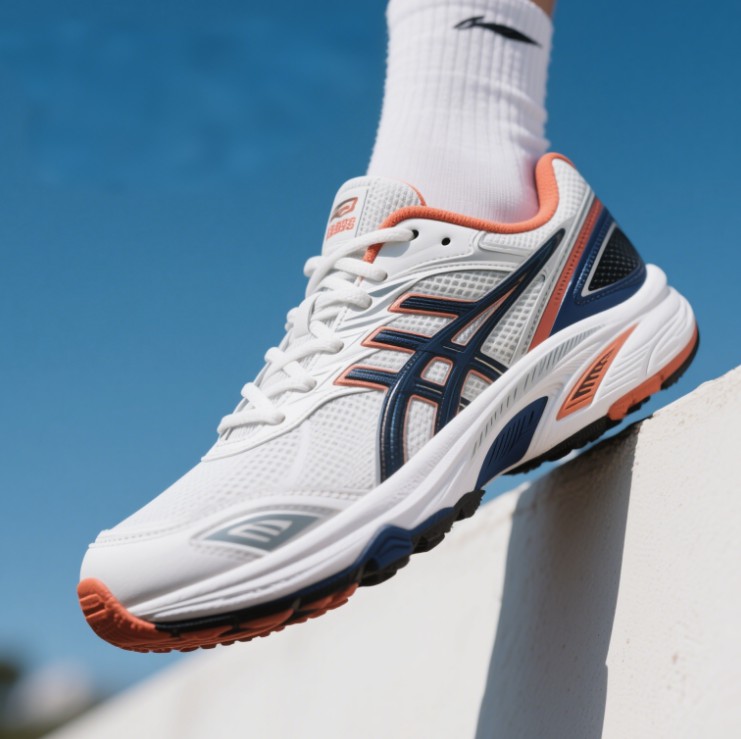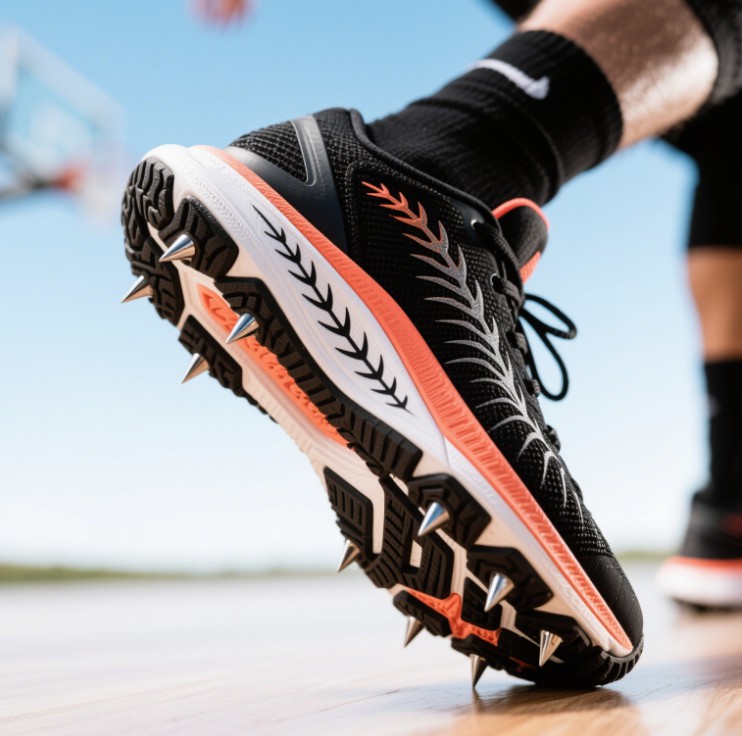It was a crisp autumn afternoon, and Michael, an avid runner and basketball enthusiast, was taking a well-deserved break after an intense training session. He had just finished an hour of dribbling drills on the basketball court, followed by a five-mile run through his neighborhood. As he kicked back in a chair, he gazed down at his shoes—one pair designed for agility on the court, the other for long-distance efficiency on the road.

Both shoes were a little worn, but Michael had always appreciated the unique qualities of each, especially the soles. His basketball shoes had that familiar fishbone tread, with its zigzagging pattern that seemed to grip the court in all the right ways. On the other hand, his running shoes, although quite different in appearance, had their own set of tiny spikes and grooves that allowed for traction on pavement.
As he laced up his running shoes, his mind wandered to a thought he had often wondered about but never really asked: Why were the soles of these shoes so different? He had seen plenty of basketball players move like lightning on the court, never losing their balance thanks to that fishbone tread. Meanwhile, marathon runners depended on the small, almost invisible studs of their shoes to give them that essential grip on the road.

He couldn’t help himself. He reached out to his friend Sam, a seasoned shoe designer, who had worked with some of the most renowned footwear brands. As soon as Michael’s message pinged through, Sam responded with his usual enthusiasm.
“Hey, man! What’s up? You’re curious about sole patterns? I love this question!”
Michael grinned at Sam’s energy. “Yeah, actually! I’ve been thinking about why basketball shoes have that fishbone tread, and running shoes have those little spikes. I’ve never really understood what makes each one better for its sport.”
Sam wasted no time in typing back, and soon, his explanation appeared on Michael’s phone.
“Okay, here’s the deal,” Sam wrote. “The soles of basketball shoes and running shoes are designed with one goal in mind: maximizing performance for each sport. They might look similar on the surface, but when you dig into the purpose behind the patterns, it all makes sense.”
“Let me break it down for you,” Sam continued. “Basketball shoes have a fishbone pattern because it’s all about lateral movement. In basketball, players need to move quickly from side to side, pivoting, juking, and cutting on a dime. The fishbone tread is designed to provide maximum grip and stability on the court, especially when making those sudden lateral movements. The zigzag shape creates more surface contact with the floor, helping players avoid slipping when they’re pushing off or changing direction quickly. The tread essentially locks into the floor, allowing for those sharp, responsive movements.”
Michael nodded as he scrolled through Sam’s message, imagining himself making a fast break down the court, the fishbone tread gripping the court beneath him.
“And then there’s running shoes,” Sam wrote. “The tread pattern is a bit more complex because running involves a lot of linear motion, with less need for side-to-side movement. In fact, it’s all about forward motion, and running shoes need to offer grip that helps with propulsion, not just stability. That’s where the stud or spike pattern comes into play. The tiny little nubs on the sole help runners get traction, particularly when they’re pushing off the ground. The studs are strategically placed for optimal grip on a variety of surfaces, whether it’s pavement, gravel, or even wet roads.”
Michael leaned back in his chair, processing Sam’s words. He had never thought about his shoes in such technical terms before. He always knew the soles were designed for specific functions, but understanding the mechanics behind each design made him appreciate the shoes even more.
“Got it,” Michael typed. “But what about traction on different surfaces? I’ve run on both wet roads and dry roads, and sometimes my running shoes feel less grippy when it’s rainy. Does that have to do with the sole design too?”
“Exactly,” Sam replied. “That’s the real kicker. The studs on running shoes are made to grip dry surfaces most effectively, but some designs are built to handle wet conditions better than others. For example, certain tread patterns use deeper, more aggressive studs for better water displacement. On the other hand, basketball courts are smooth, and that fishbone pattern is designed for controlled traction. When you play indoors, there’s less need to worry about water, so the focus is more on ensuring quick directional changes.”
Michael could practically hear Sam’s voice in his head as he read the message. “So, it’s all about optimizing performance for specific actions?” he typed.
“Exactly!” Sam replied. “Basketball players need control for their quick pivots, while runners need the ability to move forward efficiently without losing speed. The sole is tailored for those needs. Some shoes even use hybrid patterns for athletes who cross-train or play on different surfaces. It’s all about making sure the shoe does its job without you thinking about it.”
Michael felt a sudden surge of gratitude for the thought that went into his footwear. The design of his shoes, while subtle, had such a big impact on his performance. He had always thought of shoes as just a tool to protect his feet, but now he realized that the sole wasn’t just there for comfort—it was crafted for a purpose.
The next time Michael laced up his basketball shoes and sprinted down the court, or when he hit the pavement for his daily run, he would have a deeper appreciation for the soles that made it all possible. Whether fishbone tread or spikes, each pattern was a testament to the careful science of footwear design, optimizing traction and grip to ensure peak performance for every step, pivot, and stride.
As he finished his run that afternoon, Michael couldn’t help but smile. Shoes had come a long way from just being protective wear—they were now finely tuned tools for athletes, tailored to the exacting demands of each sport.
Shoe soles are more than just a surface. They are a specialized design, each tailored to the demands of its sport. Whether it’s the lateral stability offered by the fishbone pattern in basketball shoes or the forward-focused traction of running shoes with studded soles, every tread serves a purpose. The next time you lace up your shoes, take a moment to appreciate the craftsmanship beneath your feet—it’s not just style; it’s performance in action.